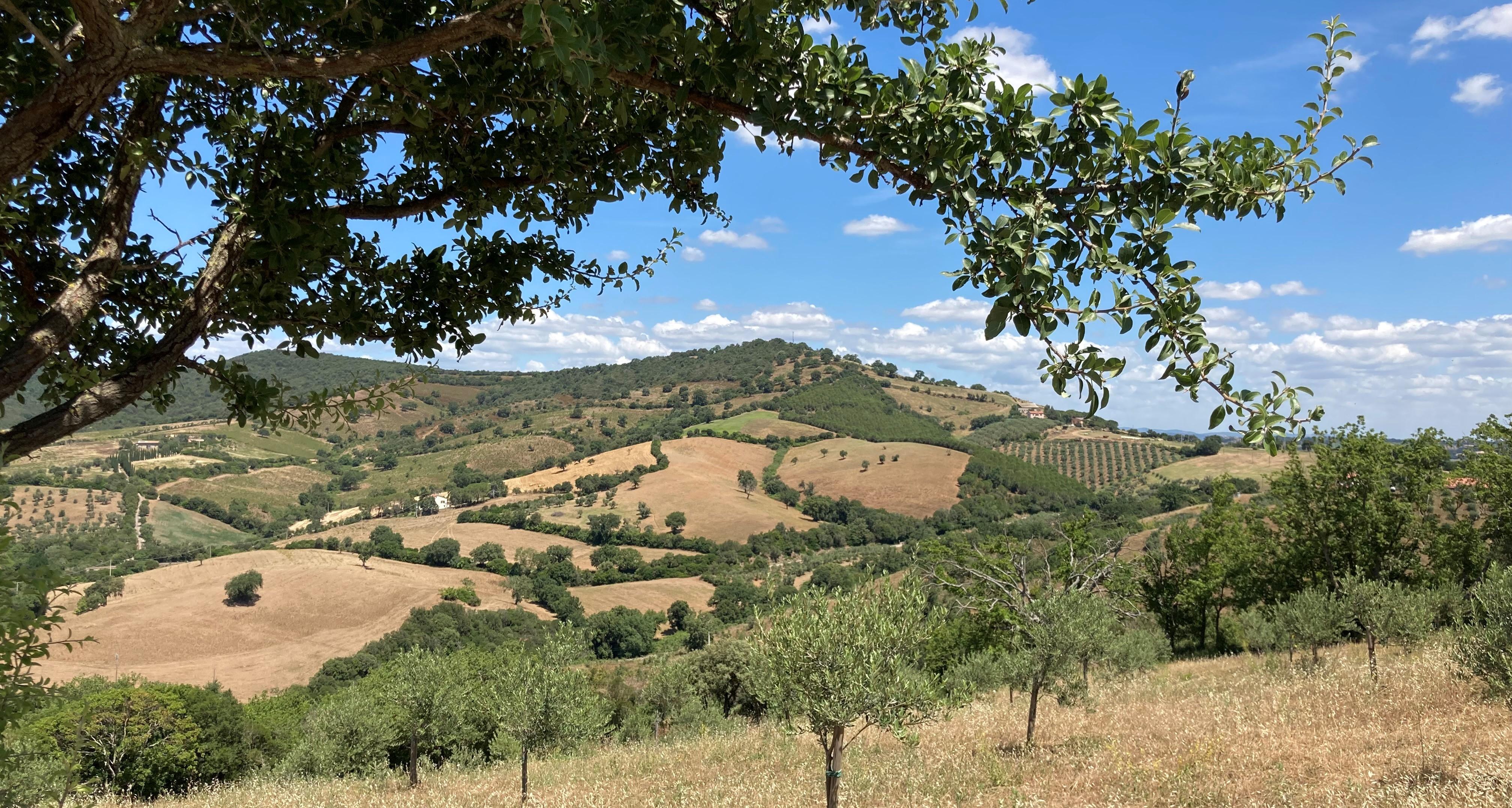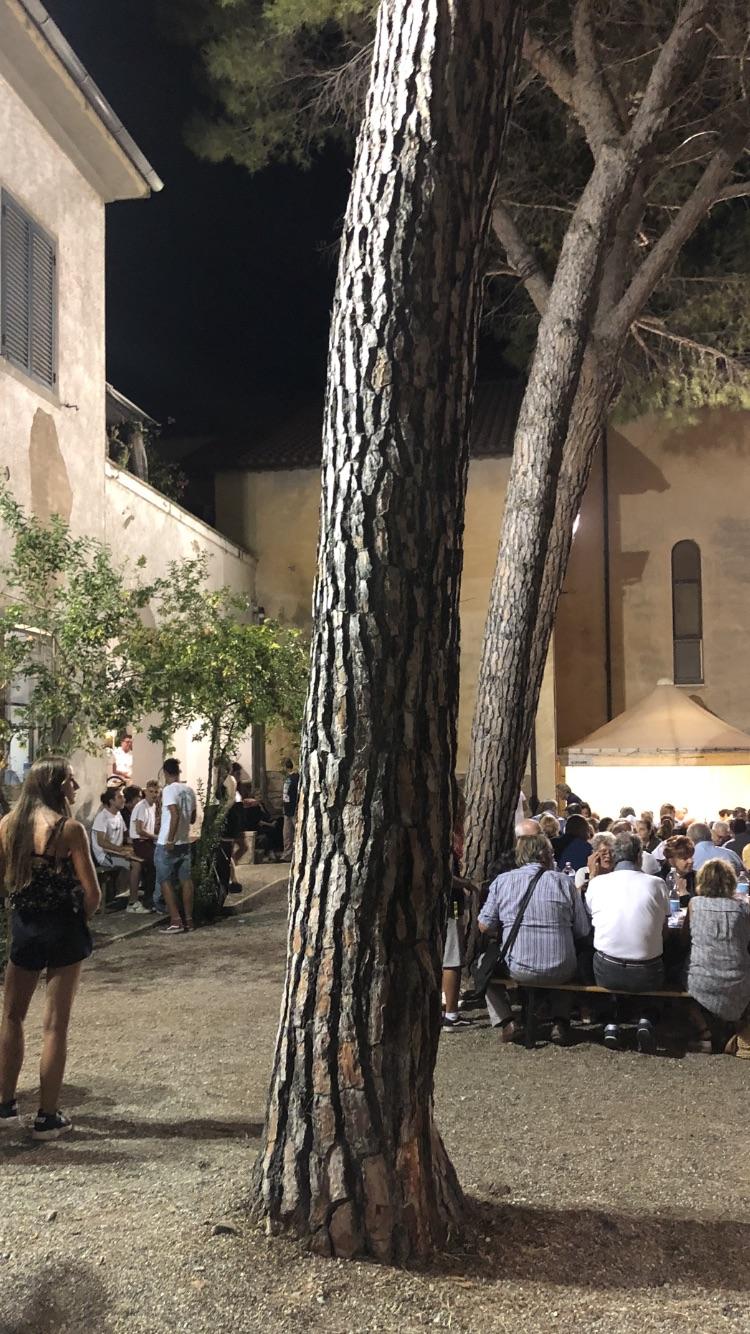The Maremma region is the coastal part of Tuscany, stretching from Pisa to Tarquinia, in the northern part of the Lazio region.
 Cultivated lands, pastures, vines and olive fields are separated by hedgerows that sculpt the Maremma landscape
Cultivated lands, pastures, vines and olive fields are separated by hedgerows that sculpt the Maremma landscape
A history of Maremma
When the sea retreated from the plains where Grosseto is currently located, around two thousand years ago, it made way for marshy wetlands which were quickly infested by malaria-carrying mosquitoes.
For centuries, the Maremma region, initially home to the fascinating Etruscan civilisation, was a desolated and sparsely populated land. To gain refuge from banditry, the inhabitants fled to the rocky heights of the region, and built wonderful medieval villages.
Large sanitation works took place at the beginning of the 19th century, under the leadership of Ferdinand III, Grand Duke of Tuscany, who himself later died of malaria. His son, Leopold II, picked up the words of his father, and opened the mout of the Ombrone river in 1823. Lovingly nicknamed Canapone by the inhabitants, his statue now adorns the Piazza Dante in Grosseto.
Despite these efforts, malaria was not defeated, and forced the administration of Grosseto to take refuge in the heights of the nearby village of Scansano every summer until 1897. It was not until modern hydraulic pumps were invented that malaria was finally defeated in the region, around the middle of the 20th century.
During the 19th century, this difficult history inspired a song, Bitter Maremma, which has then been covered by many modern singers.
Everyone says Maremma, Maremma
But to me, it's a bitter Maremma
Birds that fly there, lose their feathers
There I have lost a loved one.
Cursed Maremma, Maremma
May Maremma be cursed as well as those who love her
My heart always trembles when you go to her
Because I fear you will never come back.
Maremma today
 The Sagra del Tortello e della Zuppa di Funghi in Marrucheti.
The Sagra del Tortello e della Zuppa di Funghi in Marrucheti.
The old wetlands have left behind an incredibly fertile land, that remained very scarcely populated. A large bunoficazione programme was put in motion from the 1930s onwards, to give land and cattle to poorer families if they accepted to settle there.
The beautiful Maremma we know and love was therefore built by determined men and women from all accross Italy: from the Abruzzi to Puglia, from the Veneto to Sardinia...
Diversity, hardwork and pride to have tamed a wild land remain characteristics of the men and women of Maremma.
This generous region has kept its welcoming reputation, and allows those who wish to know it to behold untoched treasures.
The sagra tradition
The word sagra comes from sacrum, latin for sacred object. It initially referred to the ceremonies that took place in the fairs and markets; nowadays, the word is used to refer to a collective gathering. It can be found in Italian literature, from Boccacio to d'Anunzio. The sagre are a testiment to a region-based popular food culture, and contribute to the valorisation of traditional practices and products.
During the last week of August, the inhabitants of Marrucheti, where the Villa Ambretta is located, organise the Sagra del Tortello e della Zuppa di Funghi. During the day, people prepare local specialties that they then eat in the evening in the main village square, while listenning and dancing to music. The famous Sagra di Marrucheti welcomes up to a thousand people a night from all over the region.



